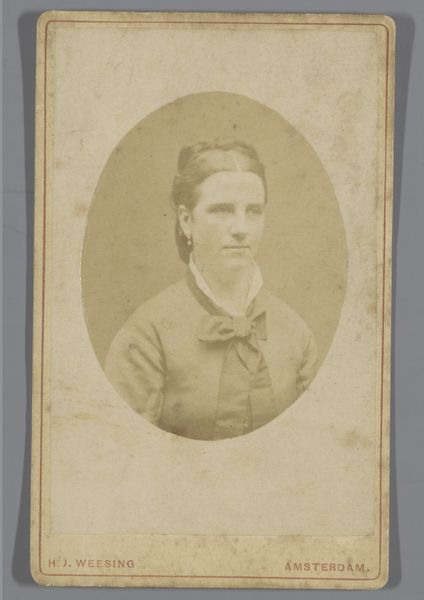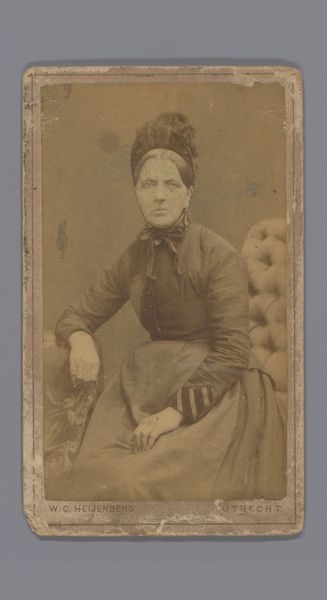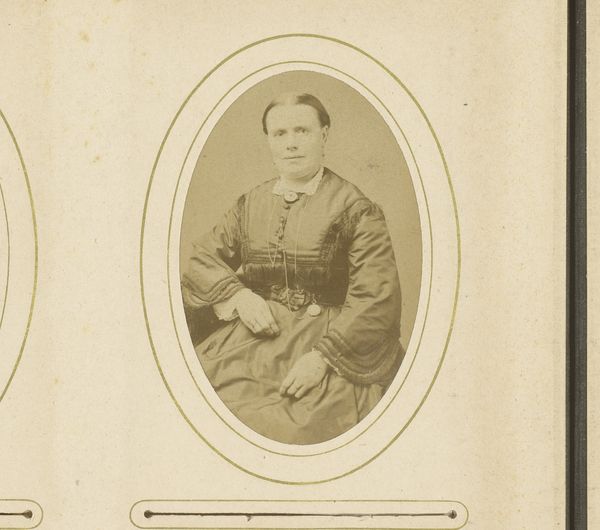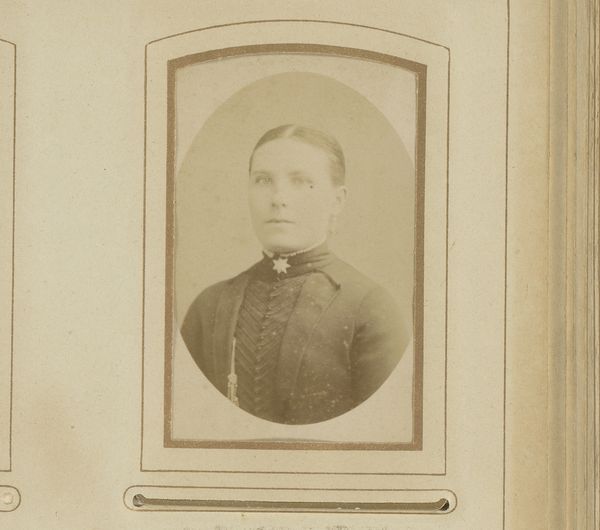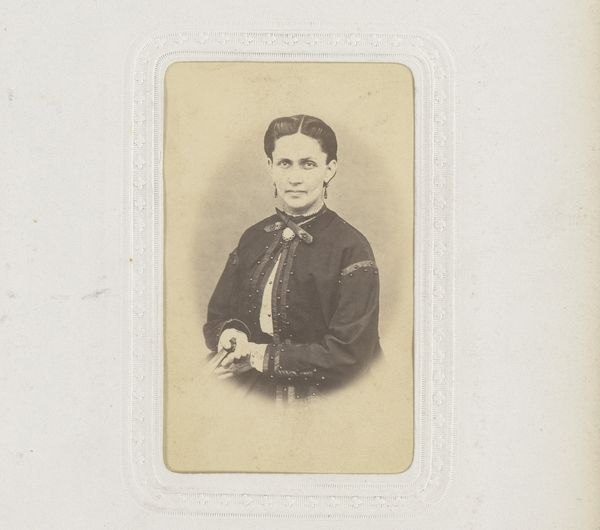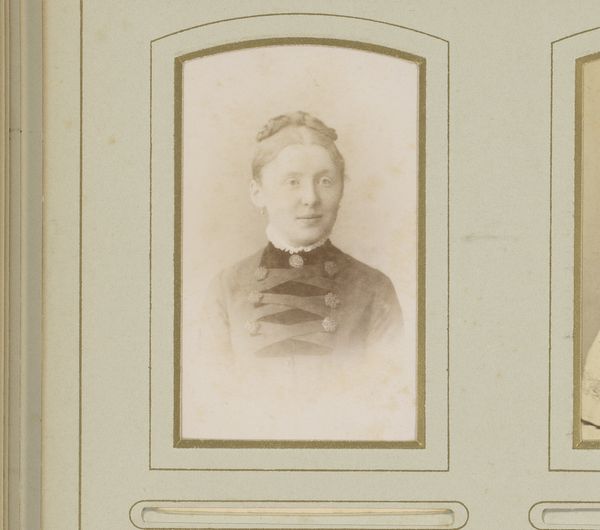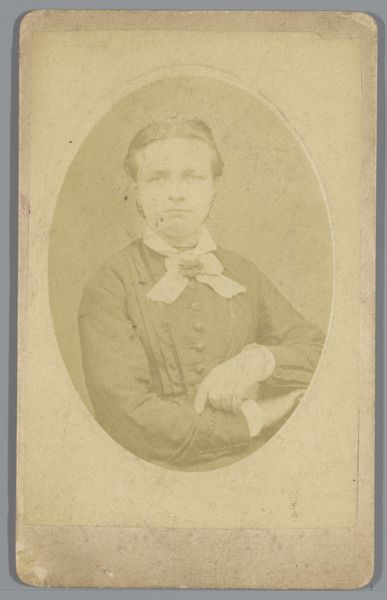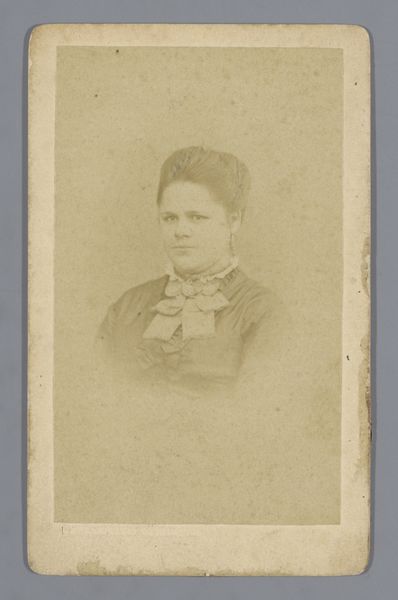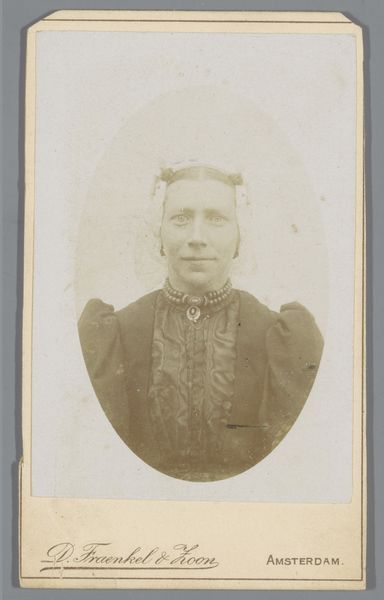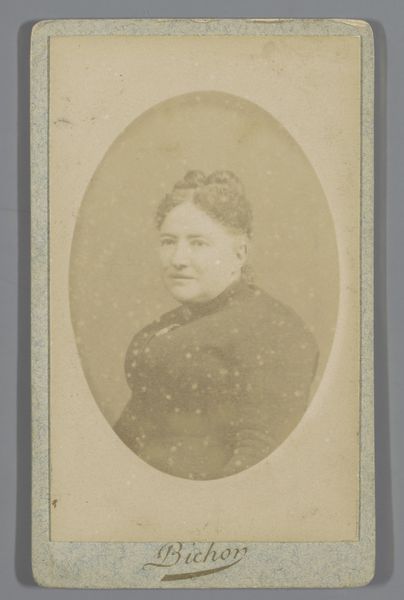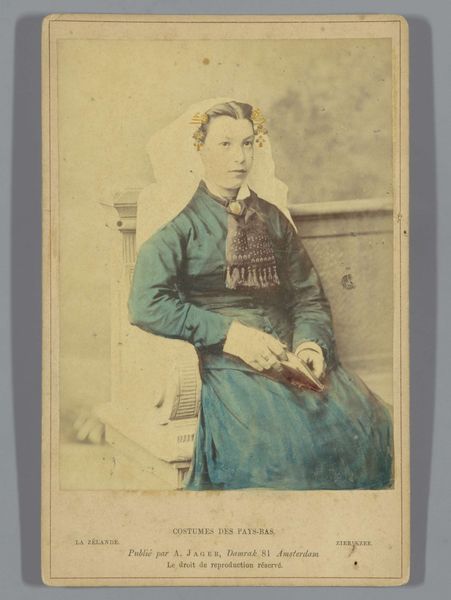
paper, photography, gelatin-silver-print, albumen-print
#
portrait
#
vintage
#
paper
#
photography
#
coloured pencil
#
gelatin-silver-print
#
19th century
#
albumen-print
Dimensions: height 98 mm, width 65 mm
Copyright: Rijks Museum: Open Domain
Curator: Here we have "Portret van een onbekende vrouw," or "Portrait of an Unknown Woman," a striking albumen print likely produced between 1880 and 1900. Editor: There’s a fragility to it. The sepia tones and visible wear give her an ephemeral quality, like she's fading from memory. The texture of the paper seems almost woven. Curator: Albumen prints like this one were particularly popular then because of their sharp detail and the ability to produce a wide range of tones. The process involved coating paper with egg white and silver nitrate, a labor-intensive procedure impacting the accessibility and value associated with such images. It raises questions about who could afford to be immortalized in this way. Editor: The focus is undeniably on the subject's clothes, no? I can’t help noticing how sturdy that bow on her chest looks and wondering about the labor involved in creating such a stiff, ornamental accessory and her own contribution in this structure. There are different levels of craftsmanship and perhaps she, too, could not easily acquire clothes. Curator: That’s a perceptive observation. Photographic portraits during this era became increasingly democratized. These portraits offered a new form of social visibility, influencing perceptions of identity and status for people navigating rigid social structures. Editor: Even though this portrait is faded with time, her face still makes an assertive appearance! The materiality adds layers. Consider how the gelatine silver and albumen interact - each plays a distinct role. Curator: Indeed! These elements are powerful reminders that the making of the image—from sourcing materials to printing and framing—shapes not only how we see the sitter, but also how that sitter wished to be seen and how these practices create value, or visibility. Editor: Looking at this work through a material lens really emphasizes the craft and labour involved, doesn’t it? So, while the sitter’s identity is unknown, the materiality whispers clues of socio-economical conditions of the moment. Curator: Absolutely. The historical context informs us, and her attire, hairstyle, as well as the choices of photographical media also speak volumes.
Comments
No comments
Be the first to comment and join the conversation on the ultimate creative platform.
